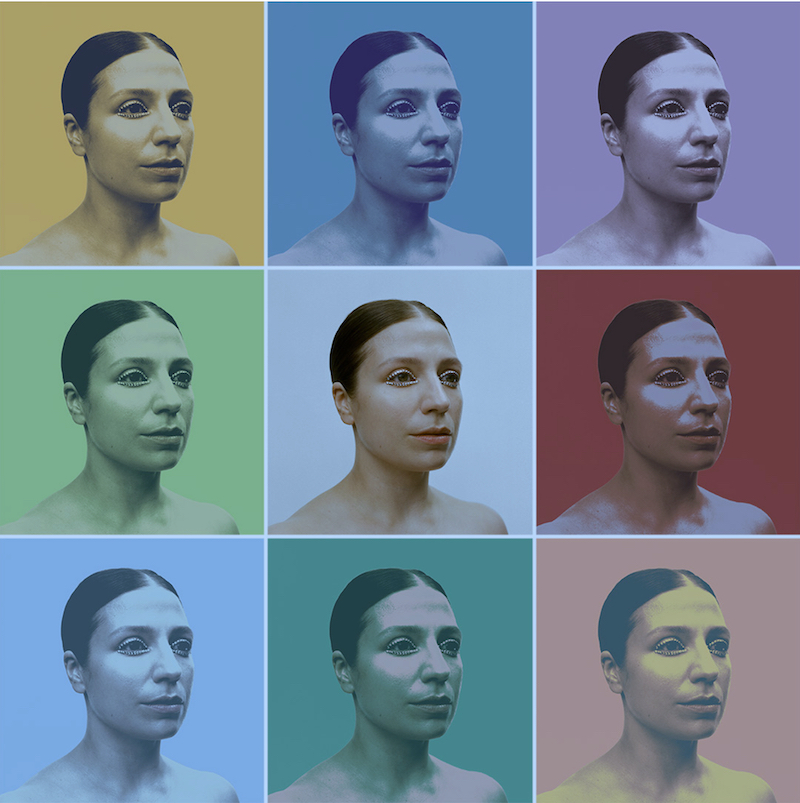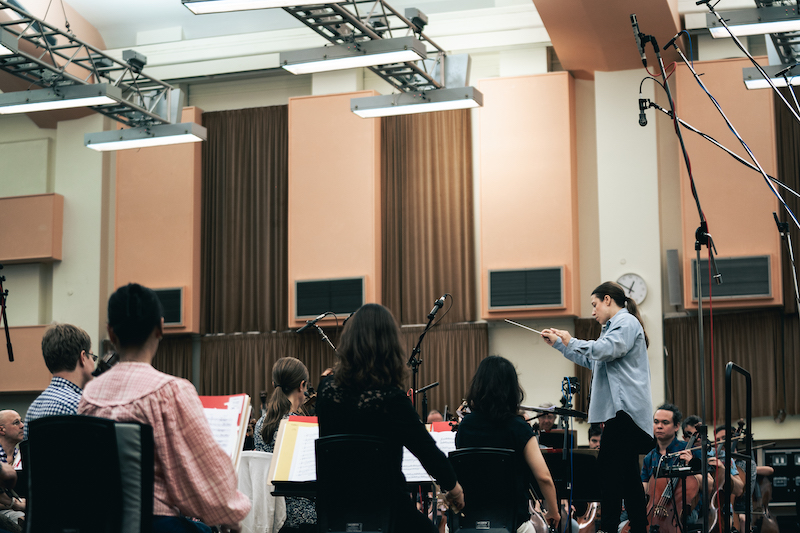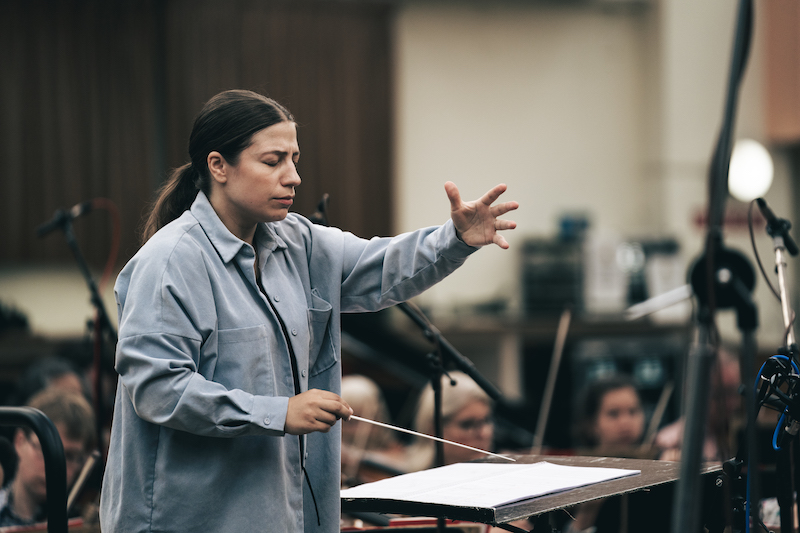Dalia Stasevska is a persuasive advocate for new music, as presented on her new album Dalia’s Mixtape. She combines a puppyish enthusiasm with a salesman’s eloquence – beneath which sits a steely self-confidence in her own artistic vision. The Mixtape is a collaboration between Stasevska, the BBC Symphony Orchestra (of which she is Principal Guest Conductor) and Platoon, an artist-led label that is part of the Apple Music family. I visited their studios in north London last week to speak to Dalia about the project and what it means to her.
Dalia’s Mixtape (reviewed below by Graham Rickson) is a double-album of pieces by 10 composers, including some names I knew – Judith Weir, Anna Meredith, Caroline Shaw – and others I didn’t, such as Andrea Tarrodi and Noriko Koide. They generally operate in the world of “ambient music”, that is to say broadly slow moving, sustained, highly textured and meditative. But not all: Anna Meredith’s Nautilus is very much not in that mould, and was indeed the first piece Stasevska chose for the project.
She heard Meredith play it live with her band and “I went backstage and told her that I'm starting my tenure with Lahti Symphony Orchestra in half a year and can you orchestrate this for me as an opening piece of my whole tenure that this would be my dream? And she said, yes.” Nautilus has an incredible energy, and an extraordinary metrical trick that is revealed halfway through. I can see why Stasevska wanted it to grab attention at the beginning of the album, even if it isn’t typical of most of what follows.
 The Judith Weir piece Still, glowing, for example (track 3) is quite unlike anything else Weir has written – and made more extreme still by Stasevska. The music comes from an orchestral interlude in Weir’s 1989 opera The Vanishing Bridegroom, a slowing transforming chord sequence, warm but strange that lasts in that version about 4 minutes. Stasevska almost doubles that, by playing it at basically half-speed. Did she ask Weir’s permission before making such a radical move? “I asked her, and I explained to her what this mixtape is about, what kind of audience I want to achieve with this. And I explained also the sound that I have, really the ambient sound that I wanted. And I said that this piece is ahead of her times.”
The Judith Weir piece Still, glowing, for example (track 3) is quite unlike anything else Weir has written – and made more extreme still by Stasevska. The music comes from an orchestral interlude in Weir’s 1989 opera The Vanishing Bridegroom, a slowing transforming chord sequence, warm but strange that lasts in that version about 4 minutes. Stasevska almost doubles that, by playing it at basically half-speed. Did she ask Weir’s permission before making such a radical move? “I asked her, and I explained to her what this mixtape is about, what kind of audience I want to achieve with this. And I explained also the sound that I have, really the ambient sound that I wanted. And I said that this piece is ahead of her times.”
Stasevska considered several orchestras for the project but ultimately the BBC Symphony seemed the most natural fit: “I mean, they can play anything.” And they do respond to her demands, both in terms of the quality of the playing but also the unusual (for classical recordings) techniques that Stasevska wanted to use. Nautilus, for example, was recorded using a “click track” to keep everyone in time, and the different sections of the orchestra were recorded separately, then stitched together in the edit suite. For the Judith Weir piece, Stasevska wanted to add extra reverb and compression in post-production, making a soundworld unrecreatable in live performance.
It's notable that of the 10 composers, nine are living (Jóhann Jóhannsson died in 2018 at the age of 48) and seven are women. Was this always part of the plan? No, says Stasevska. “When I curated this, I just curated pieces that inspire me. And I was myself surprised that most of them were women.” It’s also notable that several of the pieces are large-scale, in the 20-minute zone. In fact, she says, “I was searching for more short pieces, but it just happened so that a couple of them were big pieces, and I just thought, what the hell, I love this music.” Ambient pieces tend to need time to breathe, and Stasevska agrees this is a style of music she really likes and listens to outside of work. I ask about whether the Mixtape should be listened to in order, or can be shuffled. The answer is revealing, first in that, although she says that a lot of thought went into the sequencing of the tracks (“there's a dramaturgy”) Stasevska is relaxed if people listen to it on shuffle: “everybody can decide to listen in their own ways.” But, given the way people listen today – and the way streaming services present music – “mostly the idea has been that it will be playlisted. Every single track is playlisted whenever they want.” The tracks must all work in isolation, or alongside very different things.
I ask about whether the Mixtape should be listened to in order, or can be shuffled. The answer is revealing, first in that, although she says that a lot of thought went into the sequencing of the tracks (“there's a dramaturgy”) Stasevska is relaxed if people listen to it on shuffle: “everybody can decide to listen in their own ways.” But, given the way people listen today – and the way streaming services present music – “mostly the idea has been that it will be playlisted. Every single track is playlisted whenever they want.” The tracks must all work in isolation, or alongside very different things.
The only time she pushes back to me is when I suggest that, for all the texture and sonic detail of the pieces, there isn’t a great deal of melody. She bristles and grabs the track listing from my hands to argue. “The Andrea Torredi has tunes, Observatory [by Caroline Shaw] has too, Utu [by her husband Lauri Porra] has a tune, Julius Eastman is one big melody.” I am firmly put in my place. “It's all melodic music. I think every single of them, in a way. I love melodies. I don't think that the texture in itself is enough. There's so much contemporary music where the problem is that it's a beautiful texture, but it doesn't go anywhere.”
When I meet her, Stasevska is about to start rehearsing for her Prom with the BBCSO, on Saturday 24 August, which, alongside Mahler and Sibelius, features Julius Eastman’s Symphony no.2, track 7 on the Mixtape. This was the final piece that was selected, and needed some work to realise: the handwritten score “has no tempo indications. It has no dynamic markings, it doesn't have bar lines. And it's even sometimes missing a little bit of instrumentation.” And the instrumentation is as idiosyncratic, even for Eastman, a notable eccentric: strings plus three tubas, three contrabassoons, three regular bassoons, three bass clarinets, three contrabass clarinets. I observe that every low woodwind player in London will be on duty for the Prom. Eastman, she says, “was a man of grand thinking. And that's why I think very highly of this piece. What moves me in this piece is that he never intended it to be performed.” And yet it is being heard at the Proms, and now on this album.
 Stasevska has a clear vision for the Mixtape project, namely to shake up what people think contemporary classical music is. The design of the liner notes doesn’t look like normal “classical” design, the tracks were released one at a time over several months onto the streaming services, and they are accompanied by a series of podcasts in which Stasevska talks to the composers (all said yes to being interviewed). And this is all part of her plan to do things differently – “I always knew that I'm never going to be the conductor that is going to do a Beethoven cycle”. Instead “I've caught so many times, for example in the airport, somebody just coming to talk to me, and then we get into what I do, and I explain that I'm a classical musician and they get fascinated. They've never been to classical music concert. And then I always ask them what kind of music they listen to? Show me? They sometimes show me a playlist that they are listening to, and I say ‘look, you're listening to classical music’, and they're amazed.”
Stasevska has a clear vision for the Mixtape project, namely to shake up what people think contemporary classical music is. The design of the liner notes doesn’t look like normal “classical” design, the tracks were released one at a time over several months onto the streaming services, and they are accompanied by a series of podcasts in which Stasevska talks to the composers (all said yes to being interviewed). And this is all part of her plan to do things differently – “I always knew that I'm never going to be the conductor that is going to do a Beethoven cycle”. Instead “I've caught so many times, for example in the airport, somebody just coming to talk to me, and then we get into what I do, and I explain that I'm a classical musician and they get fascinated. They've never been to classical music concert. And then I always ask them what kind of music they listen to? Show me? They sometimes show me a playlist that they are listening to, and I say ‘look, you're listening to classical music’, and they're amazed.”
This is revealing both because it shows how “real life” shapes Stasevska’s approach to her music-making – but also because the idea of her striking up conversations with strangers in airports to evangelise for her art is so very in character, from what I have seen. And I am sure that she converts everyone she speaks to, such is her charm, her charisma and her conviction.














Add comment